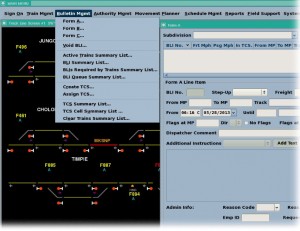Mobile technology has evolved rapidly over the past few years and today affects every aspect of our lives, including transportation. As transportation managers seek new ways to compete in a challenging market place, many are implementing mobile technologies to optimize their operations. 44 percent of transportation executives surveyed globally said mobile is their top strategic priority, and 83 percent mentioned mobile as one of their strategic goals. Continue Reading
Railway Systems
Computer-Aided Dispatching System Development
Rail network velocity, timely arrivals, efficiency and safety are critical in today’s fast-paced transportation markets. Computer-Aided Dispatching (CAD) systems are designed to remove the risk of human error, thus helping to achieve safety and stability on the railroads. The CAD systems assist dispatchers in issuing safe train movement authorities, while integrating resource planning to keep moving trains efficiently. Continue Reading
Role of Positive Train Control in Rail Safety
Under the Rail Safety Improvement Act, all freight and commuter railroads in the United States are to be equipped with Positive Train Control (PTC) systems by the end of 2015. This decision was taken by Congress in 2008 and is intended to improve safety of rail transport by reducing the risk of human error. It is expected that these measures will contribute to the prevention of train-to-train collisions, over-speed derailments, train movement through a switch left, and to the protection of roadway workers and their equipment. Continue Reading
Towards Safer Railroads: Simulation Testing Solutions
Managing safety on the rail network presents a major challenge to the rail industry as it faces pressures from rising numbers of passengers and high-speed trains. Nowadays, trains can travel faster, are heavier, and require a greater distance to stop. Possibilities for accidents include derailment, head-on collision with other trains traveling the opposite direction, and collision with automobiles at a level crossing. Level crossing collisions are relatively common in the United States, resulting in death for about 500 people each year. (Source: Federal Railroad Administration) Continue Reading
PSA Advocates Embedded Technologies for Increased Safety in Railway Systems
Safety has long been the most significant issue and biggest challenge facing the transportation industry. According to the research from Global Industry Analysts, in 2015 the value of the global railroad transport industry will reach $800 billion. As a result, the cost of failure also increases dramatically. Communication errors, visibility issues and other human errors cause the majority of rail accidents year after year. Because of this, rail embedded systems have grown exponentially over the last decade, thus dramatically reducing the number of accidents caused by human error. Continue Reading





